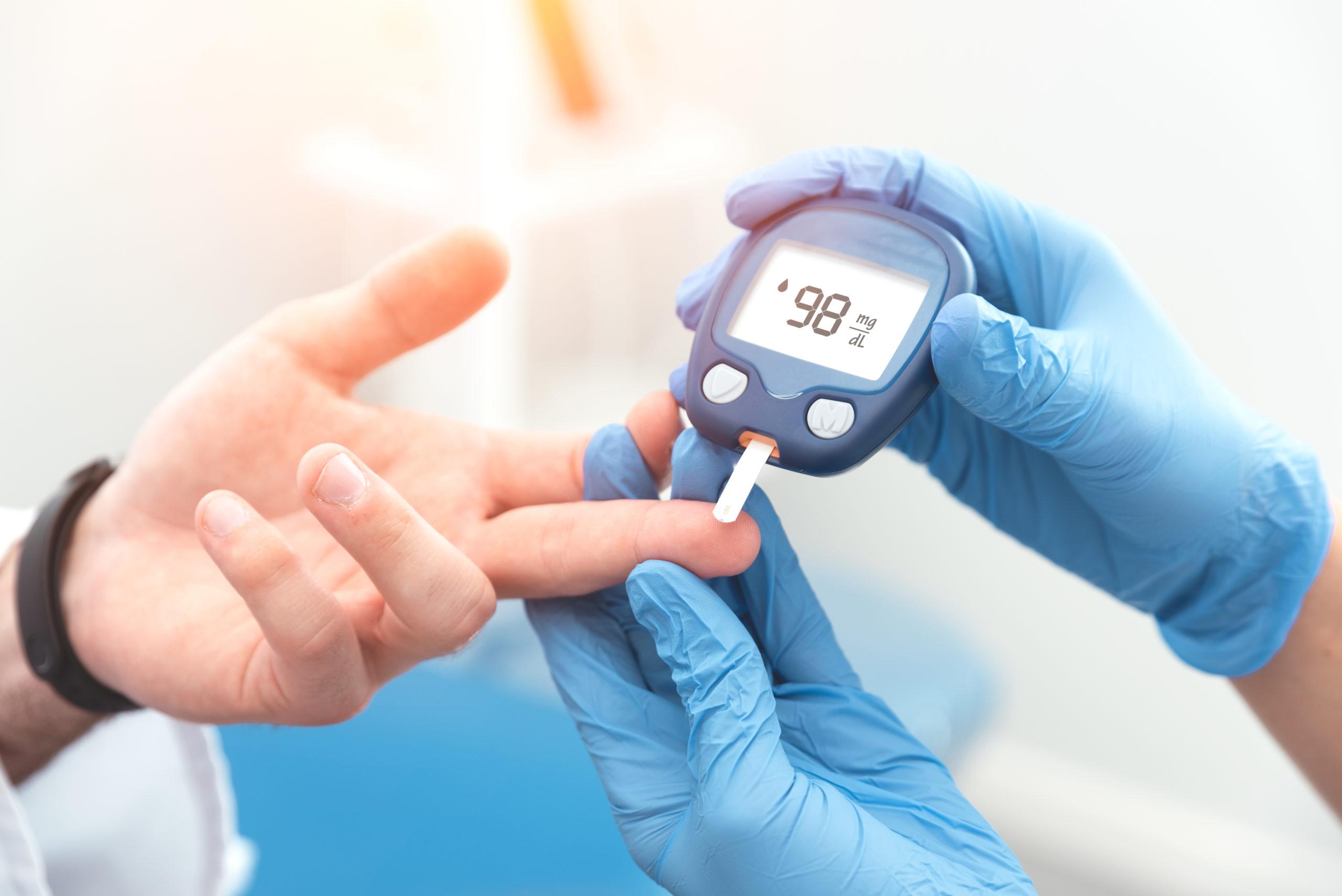Diabetes 101: Everything You Need to Know
What is Diabetes?
Diabetes is a common health problem where the body is unable to properly process sugar. Sugar (which is also known as glucose) is the food that gives us energy and is the main source of fuel for the brain and is processed in the body by Insulin.
There are three kinds of diabetes:
- Type 1 diabetes is an auto-immune disease that causes the body to attack its own insulin production system
- Type 2 diabetes is a chronic, progressive illness that causes the body to become resistant to insulin
- Gestational diabetes is a kind of temporary diabetes that can affect some pregnant women
Type 1 diabetes can develop at any age, though it often appears during childhood or adolescence.
Type 2 Diabetes is estimated to be most common with at least 90% of Diabetes cases. The exact causes why people develop Type 2 Diabetes are not completely clear, but it seems like it is both genetic and related to the environment. It develops most often in people older than 40 years who are overweight, but this isn’t always the case.
The health consequences of Diabetes happen because the sugar is not being processed properly by the body, which then leads to an increase of sugar in the blood. Over a long period of time this can lead to damages to the arteries and nerves and related complications. Type 1 and 2 Diabetes will be our main focus here.
Signs & Symptoms
The symptoms of Diabetes depend on how high the blood sugar is in the blood. In type 1 Diabetes, the symptoms usually show quicker and are more severe compared to Type 2 Diabetes. People who develop Type 2 Diabetes may not experience Symptoms in the beginning.
The signs and symptoms of type 1 and 2 Diabetes are:
- Frequent urination
- Extreme thirst and hunger
- Unexplained weight loss
- Infections or cuts that heal very slowly or not at all
- Frequent infections, such as gums or skin or urinary infections
- Fatigue
- Irritability
- Blurred vision
If you notice any possible diabetes symptoms you should contact your doctor. The earlier the condition is diagnosed; the sooner treatment can begin.
If you’ve already been diagnosed with diabetes, you’ll need close medical follow-up until your blood sugar levels stabilize.
Complications
Complications due to Diabetes can arise from having too low blood sugar levels or from having high blood sugar over a long period of time.
People living with Type 1 Diabetes especially or Type 2, who take insulin or pills to make the blood sugar go down, can experience a drop in blood sugar. If the blood sugar drops too far people may get very low blood sugar (called “hypoglycemia”). This low blood sugar has symptoms. They include:
- Sweating
- Trembling
- Dizziness
- Hunger
- Confusion
- Seizures
- Loss of consciousness
Low blood sugar is treated with quickly absorbed carbohydrates, such as fruit juice or glucose tablets.
The long-term complications of Diabetes usually result from the high levels of sugar in the blood and depend on how well controlled the blood sugar is over a long period of time as they usually develop gradually. Possible complications include:
- Cardiovascular disease. Diabetes strongly increases the risk for various cardiovascular problems, including coronary artery disease with chest pain (angina), heart attack, stroke and narrowing of arteries (atherosclerosis). If you have diabetes, you’re more likely to have heart disease or stroke.
- Nerve damage (neuropathy). Increased sugar in the blood can injure the walls of the tiny blood vessels (capillaries) that nourish your nerves, especially in your legs. This can cause tingling, numbness, burning or pain that usually begins at the tips of the toes or fingers and gradually spreads upward. If it’s left untreated, one could lose all sense of feeling in the affected limbs. Damage to the nerves related to digestion can cause problems with nausea, vomiting, diarrhea or constipation. For men, it may lead to erectile dysfunction.
- Kidney damage (nephropathy). The kidneys contain millions of tiny blood vessel clusters (glomeruli) that filter waste from the blood. Diabetes can damage this delicate filtering system. Severe damage can lead to kidney failure or irreversible end-stage kidney disease, which may require dialysis or a kidney transplant.
- Eye damage (retinopathy). Diabetes can damage the blood vessels of the retina (diabetic retinopathy), potentially leading to blindness. Diabetes also increases the risk of other serious vision conditions, such as cataracts and glaucoma.
- Foot damage. Nerve damage in the feet or poor blood flow to the feet increases the risk of various foot complications. Left untreated, cuts and blisters can develop serious infections, which often heal poorly. These infections may ultimately require toe, foot or leg amputation.
- Skin conditions. Diabetes may leave you more susceptible to skin problems, including bacterial and fungal infections.
- Hearing impairment. People with Diabetes are more likely to develop hearing impairment.
- Alzheimer’s disease. Type 2 diabetes may increase the risk of dementia, such as Alzheimer’s disease. The poorer your blood sugar control, the greater the risk appears to be. Although there are theories as to how these disorders might be connected, none has yet been proved.
- Depression. Depression symptoms are common in people with type 1 and type 2 diabetes. Depression can affect diabetes management.
Attention!
There are a lot of possible complications, however, some diabetes complications require fast attention from a Doctor and it is important to keep these in mind if you or a relative are living with Diabetes. These are:
- High blood sugar (hyperglycemia). Your blood sugar level can rise for many reasons, including eating too much, being sick or not taking enough glucose-lowering medication. Check your blood sugar level as directed by your doctor and watch for signs and symptoms of high blood sugar — frequent urination, increased thirst, dry mouth, blurred vision, fatigue and nausea. If you have hyperglycemia, you’ll need to adjust your meal plan, medications or both.
- Increased ketones in your urine (diabetic ketoacidosis). When cells are starving and are not getting enough energy, the body starts to break down fat. This produces a toxic acid called ketone. Signs of this include loss of appetite, weakness, vomiting, fever, stomach pain and a sweet, fruity breath. There is a urine test to check for excess ketones. If you have excess ketones in your urine, consult your doctor right away or seek emergency care. This condition is more common in people with type 1 diabetes.
- Hyperglycemic hyperosmolar nonketotic syndrome. This is a life-threatening condition, which the blood sugar levels are very high, and the blood turns thick and syrupy from the excess sugar. The signs and symptoms include a blood sugar reading over 600 mg/dL (33.3 mmol/L), dry mouth, extreme thirst, fever, drowsiness, confusion, vision loss and hallucinations. It is seen in people with type 2 diabetes, and it’s often preceded by an illness. Call your doctor or seek immediate medical care if you have signs or symptoms of this condition.
- Low blood sugar (hypoglycemia). When blood sugar level drop below the target range, it’s known as low blood sugar (hypoglycemia). Blood sugar levels can drop for many reasons, including blood sugar lowering medication, such as Insulin, or skipping meals and doing more physical activity than usual. Check your blood sugar level regularly, and watch for signs and symptoms of low blood sugar — sweating, shakiness, weakness, hunger, dizziness, headache, blurred vision, heart palpitations, irritability, slurred speech, drowsiness, confusion, fainting and seizures.
Prevention
Type 1 diabetes cannot be prevented.
Type 2 Diabetes can be prevented by:
- Eating healthier. A healthy diet is key to preventing chronic conditions
- Increasing physical activity. At least 30 minutes of moderate physical activity a day
- Losing additional weight. If you’re overweight, losing even 7 percent of your body weight — for example, 6 kilograms if you weigh 90 kilograms can reduce the risk of diabetes
Have your blood sugar checked at least once a year to check that you haven’t developed type 2 diabetes.
Diagnosis
To diagnose diabetes, you should always talk to your Doctor. There are different tests that can be done to see if someone has Diabetes.
These are:
- HbA1C – Glycated hemoglobin (A1C) test. This is a very useful blood test because it can tell you how your average blood sugar levels have been for the past 2-3 months. It also does not require fasting. It measures the percentage of blood sugar attached to hemoglobin, the oxygen-carrying protein in red blood cells:
· The higher your blood sugar levels, the more hemoglobin you’ll have with sugar attached and the higher the percentage.
· An A1C level of 6.5 percent or higher on two separate tests indicates that you have diabetes.
· An A1C between 5.7 and 6.4 percent indicates prediabetes.
· Below 5.7 is considered normal.
- Random blood sugar test. A blood sample is taken at a random time. Regardless of when you last ate, a random blood sugar level of 200 milligrams per deciliter (mg/dL) — 11.1 millimoles per liter (mmol/L) — or higher suggests diabetes.
- Fasting blood sugar test. A blood sample is taken after an overnight fast.
. A fasting blood sugar level less than 100 mg/dL (5.6 mmol/L) is normal.
. A fasting blood sugar level from 100 to 125 mg/dL (5.6 to 6.9 mmol/L) is considered prediabetes.
. If it’s 126 mg/dL (7 mmol/L) or higher on two separate tests, you have diabetes.
- Oral glucose tolerance test. A blood sample is taken after an overnight fast, and the fasting blood sugar level is measured. Then you drink a sugary liquid, and blood sugar levels are tested periodically for the next two hours.
. A blood sugar level less than 140 mg/dL (7.8 mmol/L) is normal.
. A blood sugar level of more than 200 mg/dL (11.1 mmol/L) after two hours indicates diabetes.
. A blood sugar level between 140 and 199 mg/dL (7.8 mmol/L and 11.0 mmol/L) indicates prediabetes
Living with Diabetes
One of the most important things to for people living with Diabetes is to keep the “ABCs” in mind:
- “A” stands for “A1C” – A1C is the blood test that shows what the average blood sugar level has been during the last 2-3 months. It is used to diagnose diabetes but also to monitor blood sugar levels.
- “B” stands for “blood pressure” – If you have diabetes, controlling your blood pressure is just as important as controlling your blood sugar. High blood pressure puts you at risk for heart attack, stroke, and kidney disease.
- “C” stands for “cholesterol” – High cholesterol is another factor that increases your risk of heart attacks, strokes, and other serious problems
In addition to monitoring the ABCs, maintaining a healthy weight and lifestyle through healthy eating and regular physical activity is one of the most important things to focus on:
- Healthy eating. There’s no specific diabetes diet. People living with Diabetes should strive to have a balanced diet and be careful with the types of carbohydrates and sugars they consume. It is recommended to center the diet on more fruits, vegetables, lean proteins and whole grains, which are foods that are high in nutrition and fiber and low in fat and calories. It is also recommended to cut down on saturated fats, refined carbohydrates and sweets.
- Physical activity. Everyone needs regular exercise, including people who have diabetes. Exercise lowers your blood sugar level by moving sugar into your cells, where it’s used for energy. Exercise also increases the sensitivity to insulin, which means the body needs less insulin to transport sugar to the cells. Talk to your Doctor to make sure that your exercise plan fits your needs and try to choose activities that you enjoy, so that this can become a regular activity for you. Aim for at least 30 minutes a day. You can also be active 3 times a day for 10 minutes each.
Treatments for type 1 and type 2 diabetes
Treatment for type 1 diabetes is centered around:
- Insulin injections or pump
- Frequent blood sugar checks
- Carbohydrate counting
Treatment of type 2 diabetes is centered around:
- Lifestyle changes
- Monitoring of blood sugar and A1C testing
- Diabetes medications, insulin or both
People with type 2 diabetes who aren’t taking insulin generally check their blood sugar less frequently. However, careful monitoring is very important and includes the A1C test, which indicates how well your diabetes treatment plan is working overall. An elevated A1C level may signal the need for a change in your oral medication, insulin regimen or meal plan. Your target A1C goal may vary depending on your age and various other factors, such as other medical conditions you may have. However, for most people with diabetes, the American Diabetes Association recommends an A1C of below 7 percent. Talk to your doctor about what your A1C target is.
The different medications used are:
- Insulin. People with type 1 diabetes need insulin therapy to survive. Many people with type 2 diabetes also need insulin therapy.
- Oral or other medications. Sometimes other oral or injected medications are prescribed as well, that can have different functions.
- Metformin (Glucophage or others). This is usually the first medication prescribed for type 2 diabetes.
(Re)sources & useful links:
- ADA
- Egypt Ministry of Health Awareness
- Al Mouneer – Diabetic Eye Care in Egypt
- Wayak Card – Subscribe to save up to 20% on Diabetes medication







Leave a Reply